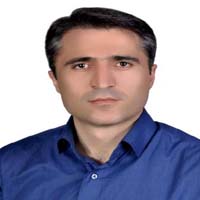Evaluation of Potential Groundwater Resources in Fractured Rocks using AHP and SAW Methods (Case Study: Almaneh Basin, Marivan, Iran)
Author(s):
Abstract:
Introduction
Ground water as a dynamic and recyclable natural resource in fractured rock terrains are characterized by single and double fracture porosity models. Due to the heterogeneous nature of the medium hydraulic properties of these rocks are mainly controlled by fracturing and influenced by multivariate parameters. This heterogeneity is due to various compactions , density of fractures and degree of weathering. Therefore, regarding the importance of ground water resources in social and economic development, the study of fractured rock aquifers especially in arid and semi-arid regions is of interest. In this paper zoning of aquifers has been carried out according to their potential using concept of overlaying of drastic parameters on groundwater development.Materials And Methods
The study area is located in the southwest of Marivan city, Iran. Due to the existence of sandstone and igneous formations and tectonic activities, fractured aquifers, was probably developed. In this paper, Simple Additive Weighted (SAW) and Analytic Hierarchy Process (AHP) using eigenvectors were used to find ground water resources. In order to evaluate the groundwater potential sources, lithology, fracture density, elevation, slope, aspect, drainage density and land use parameters were considered. For this purpose, layers of these information were provided in the IDRISI and GIS medium and then sorted and weighted using the weighted cumulative integrate AHP and SAW methods. The index of ground water potential sources was determined by multiplying each raster layer by its corresponding weighting factor assigned by the AHP and SAW methods. Finally the potential groundwater zoning map was generated by cumulating the seven individual rating and weighting maps.Results And Discussion
According to the output map of AHP model, 56.8 percent of the total study area had a very high water potential and this includes 94.26 percent with high potential and areas with moderate, low and very low water potential included 22.96, 24.96 and 17.07%, respectively. Regarding to the paired comparison AHP model, despite of direct determination of the weight of the SAW model, weight classes of each criterion were achieved according to the preferred class of all classes to the criteria. It is normal that the results from these two models will be different, so that according to SAW method, 0.73,13.07,30.16,18.65,7.37% of study area included area with very high, high, moderate, low and very low groundwater potential resources, respectively. For validation of two mentioned models (AHP and SAW models), The map of springs location were overlaid on the map of potential sources of groundwater of these two methods and the results showed a good agreement with the model of the position of the spring.Conclusion
In This study the AHP and SAW models were used to finding underground water sources. The results showed that in both methods, highly potential water resources areas were mainly located in the northwest of the study area and the west and southwest area had higher potential water resources relative to the east part of the study area. This could be due to low slope and elevation or may be related to the alluvial deposits which covered upper parts of the hard rock with low thickness and this plays a main role in recharging of hard rock.However, comparing the results of the two methods showed that AHP method has better results than the SAW. The result of AHP map showed that the east and center part of the study area had moderate to high groundwater potential which consist of about 50% of area.
Language:
Persian
Published:
Journal of water and soil, Volume:30 Issue: 5, 2017
Pages:
1461 to 1477
magiran.com/p1649548
دانلود و مطالعه متن این مقاله با یکی از روشهای زیر امکان پذیر است:
اشتراک شخصی
با عضویت و پرداخت آنلاین حق اشتراک یکساله به مبلغ 1,390,000ريال میتوانید 70 عنوان مطلب دانلود کنید!
اشتراک سازمانی
به کتابخانه دانشگاه یا محل کار خود پیشنهاد کنید تا اشتراک سازمانی این پایگاه را برای دسترسی نامحدود همه کاربران به متن مطالب تهیه نمایند!
توجه!
- حق عضویت دریافتی صرف حمایت از نشریات عضو و نگهداری، تکمیل و توسعه مگیران میشود.
- پرداخت حق اشتراک و دانلود مقالات اجازه بازنشر آن در سایر رسانههای چاپی و دیجیتال را به کاربر نمیدهد.
دسترسی سراسری کاربران دانشگاه پیام نور!
اعضای هیئت علمی و دانشجویان دانشگاه پیام نور در سراسر کشور، در صورت ثبت نام با ایمیل دانشگاهی، تا پایان فروردین ماه 1403 به مقالات سایت دسترسی خواهند داشت!
In order to view content subscription is required
Personal subscription
Subscribe magiran.com for 70 € euros via PayPal and download 70 articles during a year.
Organization subscription
Please contact us to subscribe your university or library for unlimited access!



